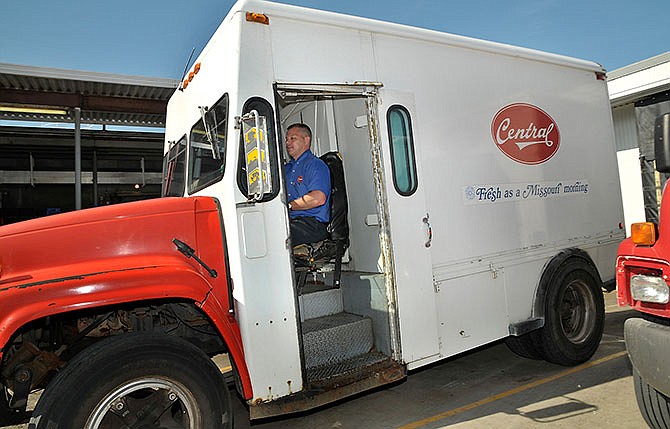A decision by Central Dairy to cease production of its cottage cheese line is raising a bit of a stink online.
Central Dairy discontinued sales of its cottage cheese in September. An online petition is hoping to change the company's mind, but Central Dairy General Manager Chris Hackman said the company has no plans to make the product again.
Hackman said Central Dairy made cottage cheese in two vats at its Jefferson City factory; the cottage cheese was just for the Jefferson City market. But sales of Central Dairy cottage cheese fell by about half over the past 15 years, Hackman said.
"It doesn't make sense to make small batches," Hackman said. "We have old equipment we need to make upgrades to, and to make upgrades to something that continues to decline did not make sense."
Cottage cheese is a bit of an oddity in the cheese world. Known for its fluffy and goopy texture, cottage cheese traces its roots back to Europe where farmers used milk left over from making butter and other cheeses to make the product.
To make cottage cheese, cheese-makers heat up skim milk and allow the milk to set, Hackman said. After the milk sets, the curd is cut away. The curd is then cooked and the whey is drained. After draining the whey, dressing - a term for milk or cream that is added to the curds to make them creamy - is added, and the product is packaged.
The protein-packed food was served as a meat substitute during World War II and gained popularity as a diet food in the 1950s. By 1970, Americans ate about 5 pounds of cottage cheese per year, according to NPR. But in recent years, consumers have favored other cheeses and dairy products, Hackman said.
Between 2007-17, consumption of cheddar cheese rose by about a pound to 11.07 pounds per American, according to the U.S. Department of Agriculture. Mozzarella cheese consumption increased during that same time from 10.66 pounds per American to 11.57 pounds.
"Hard cheese sales are doing very good, but that small cottage cheese segment is not doing very well," Hackman said.
The amount of cottage cheese produced nationwide fell from 735 million pounds in 2000 to 675 million pounds in 2017, according to the USDA. Over the same time frame, yogurt production exploded from 1.8 billion pounds in 2000 to 4.5 billion pounds in 2017.
"You have a lot of people moving from cottage cheese as a protein source to yogurt," Hackman said.
Central Dairy's parent company, Prairie Farms, makes cottage cheese in large curd, small curd, low-fat and low-sodium varieties. From the beginning, Central Dairy and Prairie Farms' cottage cheese operations were intertwined.
Long before Central Dairy merged with Prairie Farms in 2007, Central Dairy learned how to make cottage cheese from Prairie Farms, Hackman said. For about 40 years after that, the two companies had distinct brands of cottage cheese.
Prairie Farms uses a culture to make its cottage cheese, which results in a more natural product than Central Dairy's, Hackman said. The products had slightly different textures. By adding some salt to Prairie Farms' cottage cheese, the products taste about the same, he said.
An online petition is asking Central Dairy to make its cottage cheese again. At 11 a.m. Wednesday, the petition had about 2,100 signatures with a goal of getting 2,500 signatures. Hackman said Central Dairy appreciates the enthusiasm in Mid-Missouri for its products.
About a year ago, Central Dairy began evaluating this option and decided it made economic sense to discontinue its cottage cheese line, Hackman said.
"It's not something we take lightly," he said. "It's something we've been mulling, and we just had to make the tough decision."

